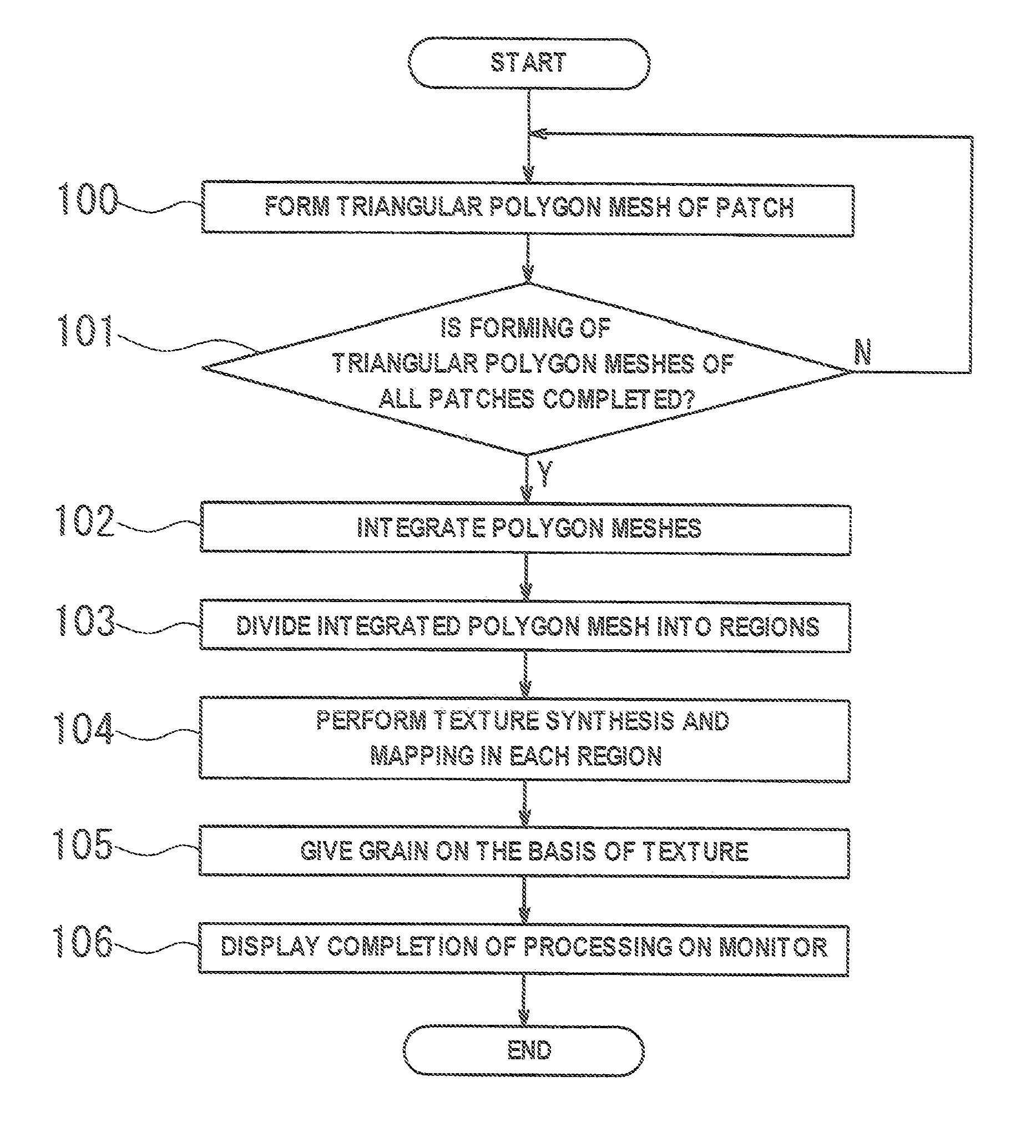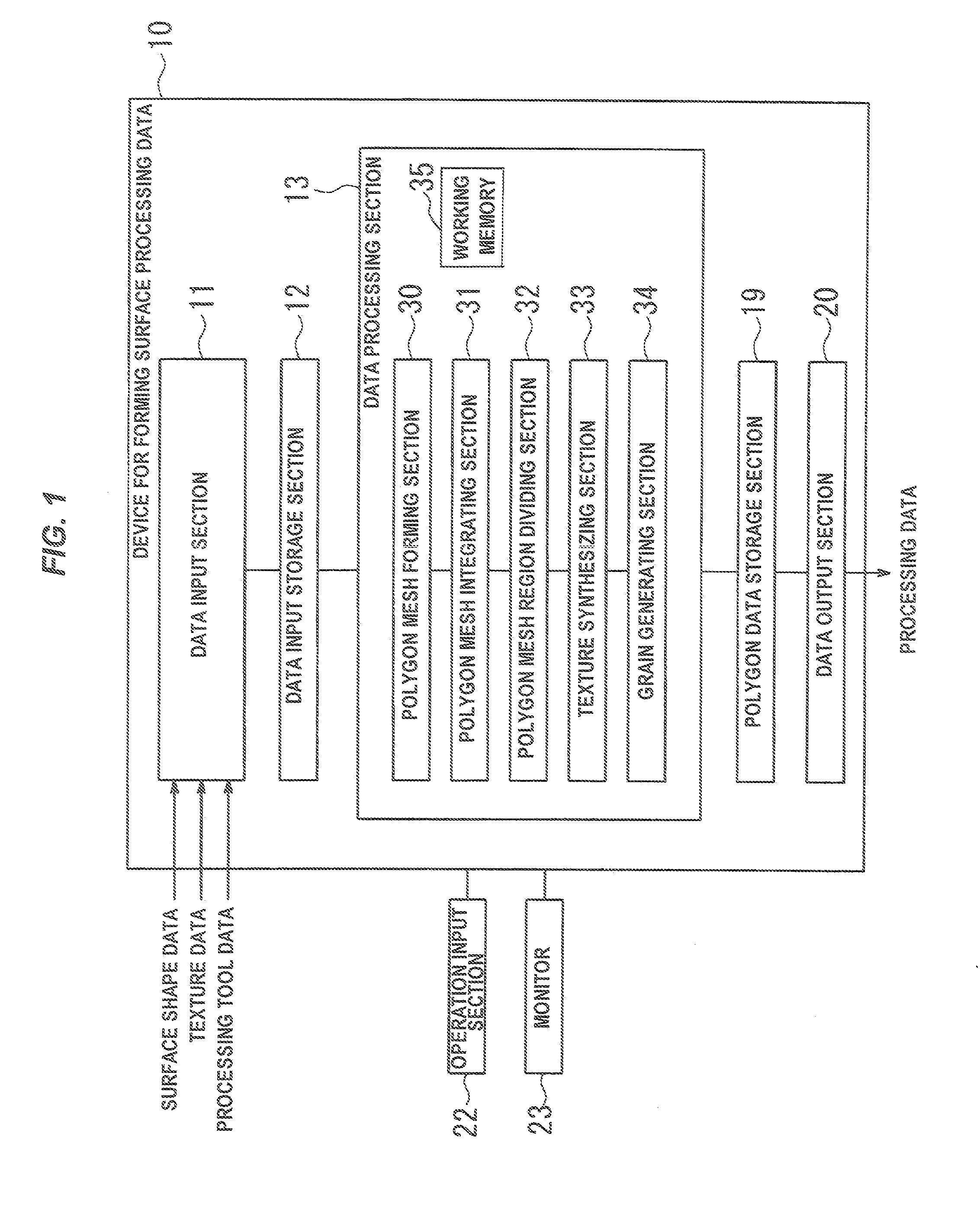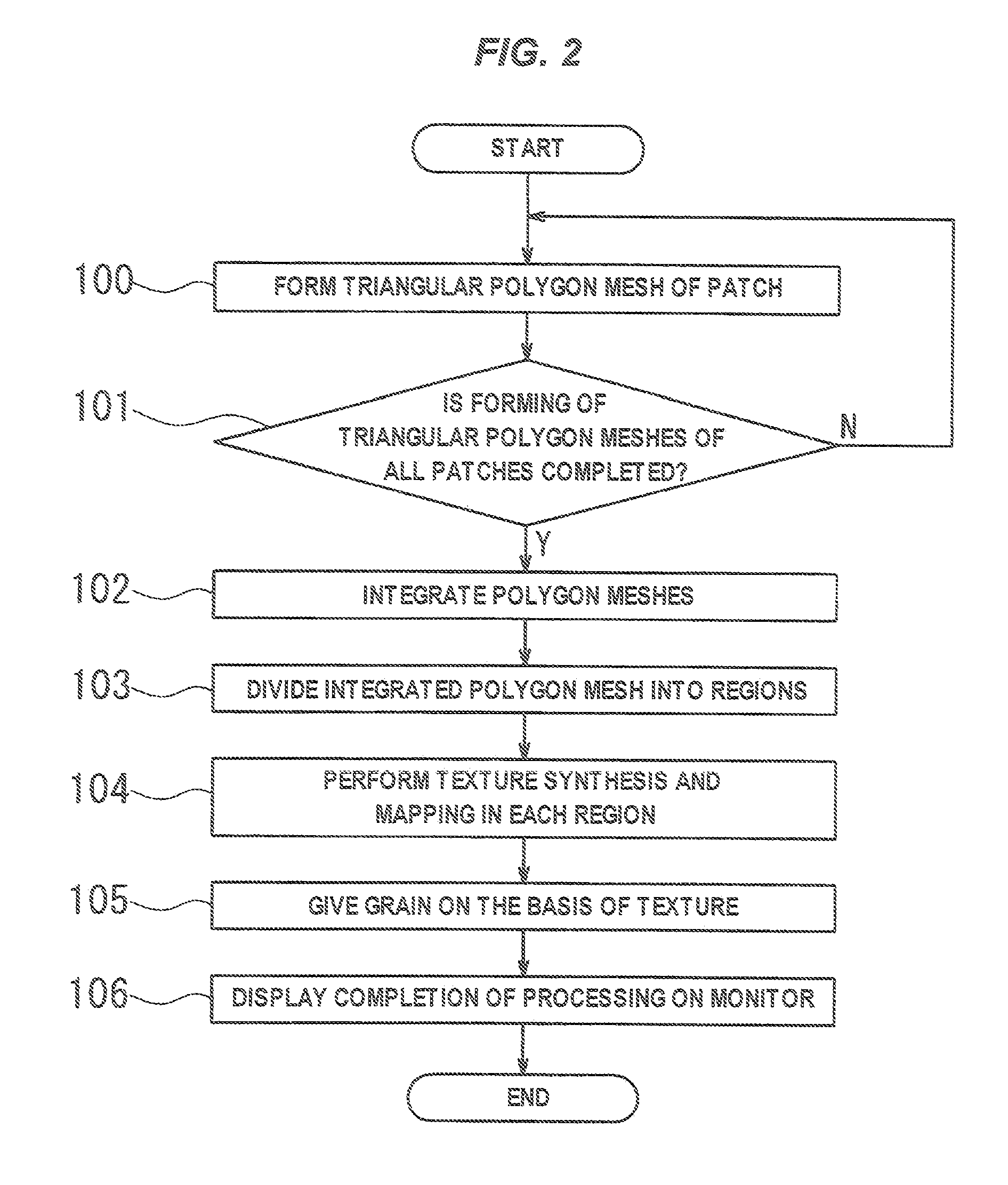Method and device for forming surface processing data
a surface processing and data technology, applied in the field of surface processing data, can solve the problems of unevenness of the grain on the mold, difficult to form the same shape repeatedly, and difficulty in representing fine shapes, etc., and achieve the effect of small amount of data to be processed and small sample data siz
- Summary
- Abstract
- Description
- Claims
- Application Information
AI Technical Summary
Benefits of technology
Problems solved by technology
Method used
Image
Examples
Embodiment Construction
[0097]An embodiment according to the present invention will be described below.
[0098]FIG. 1 is a block diagram showing a configuration of a device for forming surface processing data according to an embodiment.
[0099]A device for forming surface processing data 10 has a data input section 11 for inputting the surface shape of a product, the texture data of a grain and processing tool data; an input data storage section 12; and a data processing section 13 for generating polygon data in which a grain shape is given to the curved surface of the product on the basis of the data stored in the input data storage section 12; a polygon data storage section 19 for storing the generated polygon data; and a data output section 20 for outputting the polygon data as processing data from the polygon data storage section 19.
[0100]An operation input section 22 equipped with a keyboard, a jog lever, etc. and a monitor 23 capable of displaying image data are connected to the device for forming surfac...
PUM
 Login to View More
Login to View More Abstract
Description
Claims
Application Information
 Login to View More
Login to View More - R&D
- Intellectual Property
- Life Sciences
- Materials
- Tech Scout
- Unparalleled Data Quality
- Higher Quality Content
- 60% Fewer Hallucinations
Browse by: Latest US Patents, China's latest patents, Technical Efficacy Thesaurus, Application Domain, Technology Topic, Popular Technical Reports.
© 2025 PatSnap. All rights reserved.Legal|Privacy policy|Modern Slavery Act Transparency Statement|Sitemap|About US| Contact US: help@patsnap.com



